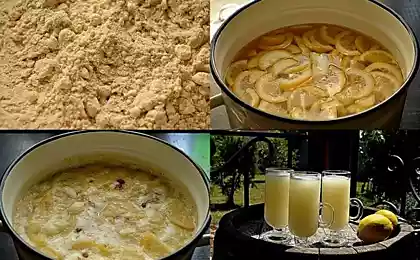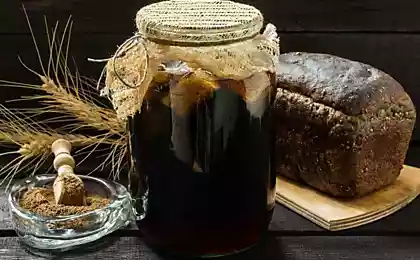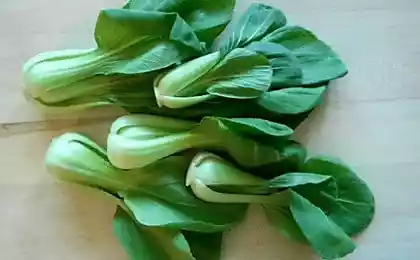535
Fermented foods: 4 useful recipe
Fermented foods are a wonderful source of beneficial bacteria in the best shape. Probiotics in capsules are deposited in the upper part of the digestive system and often do not reach the bowel, while fermented foods will carry good bacteria to the very end of the digestive tract.
The fermentation carries out a preliminary "digestion" of food, making it easier to digest. That's why fermented foods are easier to digest in people with damaged intestines. Fermentation releases nutrients from food, making them more available to the body: for example sauerkraut contains 20 times more easily digestible vitamin C than fresh.
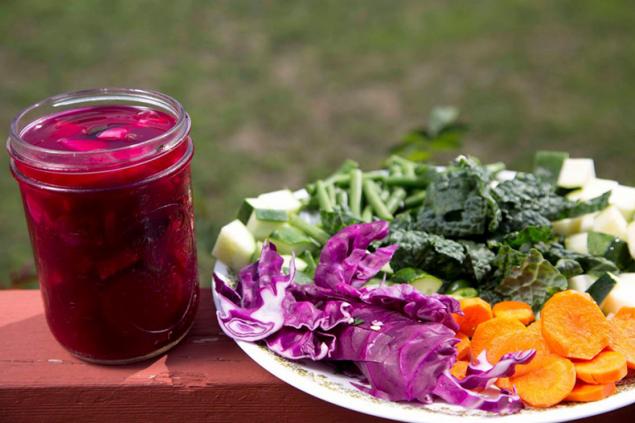
You can ferment any product. Fermented foods should be introduced gradually beneficial bacteria and natural enzymes in fermented foods can cause an effect of extinction.
Never start more than 1.h.l. any fermented product per day.*
Depending on the severity of the condition, different people can enter the fermented products in different pace. If 1.h.l. there is the effect of extinction, let the reaction calm down a few days and then increase to 2 tsp 2 tsp When well tolerated, add a spoon.
Continue to gradually increase the amount of fermented food, controlling the effect of extinction. Best not to introduce more than one or two of fermented products at the same time. It is usually recommended to start with the homemade yogurt and sauerkraut juice, which often can be introduced at the same time.
*This recommendation applies to people with serious digestive disorders. If you are interested in fermented foods just as a healthy diet, you can eat them as usual always ate sauerkraut and kefir.
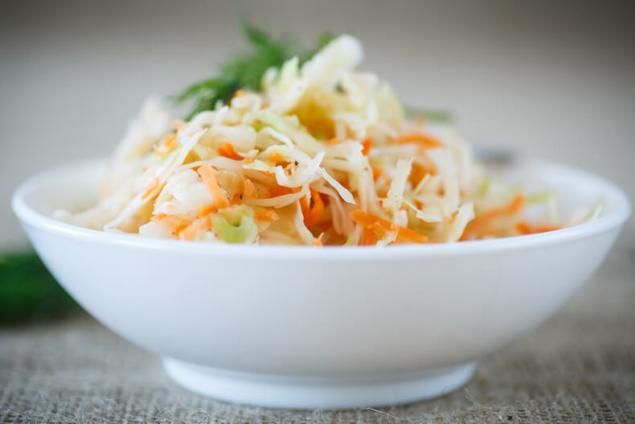
SauerkrautSauerkraut is an ancient food that help in digestion and detoxification. First, use only the juice, and then gradually introduce into the diet very cabbage. Sauerkraut stimulates stomach acid and helps digestion. Most patients with digestive disorders suffer from a decrease in the production of acid.
Sauerkraut does not need the addition of bacteria for fermentation because all these bacteria live on the surface of the cabbage. Don't forget to add natural salt (in any case not jodirovannuju) before the fermentation: salt will inhibit the reproduction of putrefactive bacteria as long as bacteria will produce sufficient acid to neutralize them.
It is also important to carefully peremat cabbage in a bowl with your hands, until then, until the cabbage and carrots will not give enough juice (the salt also will help with this), so that all the cabbage as a result of the fermentation is fully submerged in the juice. If not enough juice, add water to cover all the cabbage liquid. If the cabbage is exposed to air, instead of fermenting it will rot.
The fermenting vegetables with wheyYou can ferment vegetables with whey. In strict dairy-free diet, the serum can be replaced by infusion of water kefir (sea rice).
Take cabbage, beets, garlic, cauliflower and carrots, cut them into small pieces or grate coarsely, add salt to taste and place freely in a glass bowl with a wide mouth. Mix 0.5 l of water with 4-5 tbsp homemade whey and pour into the jar so that the water covers the vegetables.
Close the jar and leave to ferment in mounds at room temperature for 7-10 days. Enter in nutrition of the juice from these vegetables. When they are ready. Start with 1.h.l. this juice.(*) Gradually increase the amount of juice and then start to introduce gradually and vegetables. These vegetables and the juice is a wonderful probiotic and also help digestion
Mixed vegetablesThis simple recipe provides a delicious fermented vegetables and a wonderful beverage.
2-3 liter jar put a floor of head coarsely chopped cabbage, medium size beets, cut into thin slices, a handful of peeled cloves of garlic and some dill seed or fresh dill.
Vegetables should fill no more than 2/3 of the banks. L. add 1-2 cm of coarse salt (preferably sea), a Cup of whey and top up with water to full banks. Put a small saucer on top so that all the vegetables were immersed in the liquid.
Leave to ferment in mounds of 1-2 weeks at room temperature, then move the vegetables in the refrigerator.
Drink the brine diluted with water, with food or between meals, and eat vegetables with meals. When the vegetables and the brine will be quite small, add fresh cabbage, beet and garlic, salt, water and again ermentrout. You can also add cauliflower, sliced carrots, and broccoli. This cycle can be repeated indefinitely.
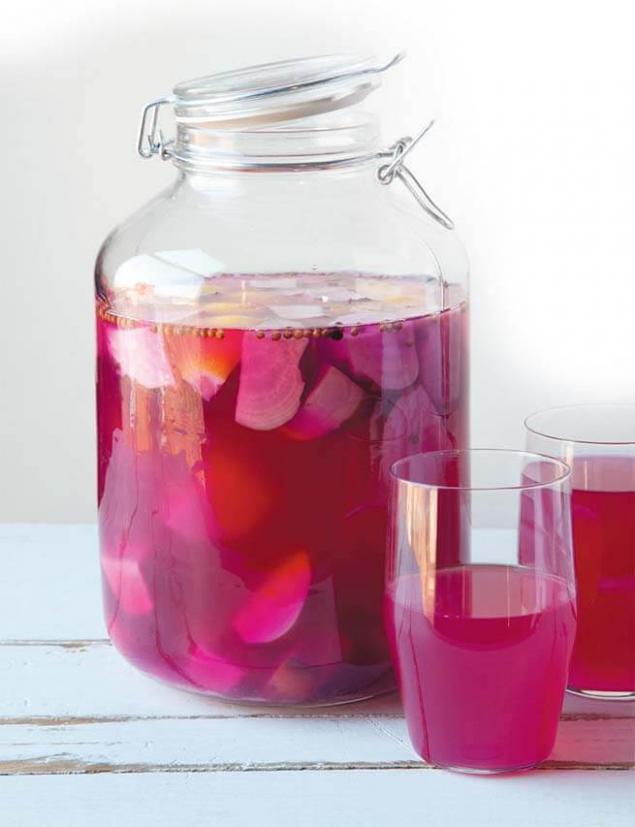
Beet kvass, Cut into thin slices, medium size beets (do not RUB on a grater, it will ruin the beets and make the fermentation too rapid, with the formation of alcohol). Put the beets in a 2-liter jar, add 1-2 tbsp coarse salt, 1 Cup of whey, 5 cloves of garlic, 1 tsp dill seed and add water.
Leave to ferment in mounds 2-5 days at room temperature, then keep in the fridge. Drink diluted with water. Add water to the jar to brew longer. When it becomes pale, it means that beets are consumed, then make a new Bank.
14 useful grains, about which know not allfiller Cabbage cake: diet pastries in a hurry
BrewYou can make kvass from any combination of fruit, berries or vegetables. A good brew is obtained from apples with ginger (ginger) and raspberries. Cut the Apple along with the skin on, RUB ginger root (about a teaspoon) and place a handful of fresh raspberries. Put in a quart jar, add 0.5 cups of whey and add water. Leave to ferment in mounds a few days at room temperature, then refrigerate. Drink diluted with water. Add water until the brew does not become pale, then start again.published
P. S. And remember, only by changing their consumption — together we change the world! ©
Source: autism-biomed.narod.ru/index/fermentation/0-36
The fermentation carries out a preliminary "digestion" of food, making it easier to digest. That's why fermented foods are easier to digest in people with damaged intestines. Fermentation releases nutrients from food, making them more available to the body: for example sauerkraut contains 20 times more easily digestible vitamin C than fresh.

You can ferment any product. Fermented foods should be introduced gradually beneficial bacteria and natural enzymes in fermented foods can cause an effect of extinction.
Never start more than 1.h.l. any fermented product per day.*
Depending on the severity of the condition, different people can enter the fermented products in different pace. If 1.h.l. there is the effect of extinction, let the reaction calm down a few days and then increase to 2 tsp 2 tsp When well tolerated, add a spoon.
Continue to gradually increase the amount of fermented food, controlling the effect of extinction. Best not to introduce more than one or two of fermented products at the same time. It is usually recommended to start with the homemade yogurt and sauerkraut juice, which often can be introduced at the same time.
*This recommendation applies to people with serious digestive disorders. If you are interested in fermented foods just as a healthy diet, you can eat them as usual always ate sauerkraut and kefir.

SauerkrautSauerkraut is an ancient food that help in digestion and detoxification. First, use only the juice, and then gradually introduce into the diet very cabbage. Sauerkraut stimulates stomach acid and helps digestion. Most patients with digestive disorders suffer from a decrease in the production of acid.
Sauerkraut does not need the addition of bacteria for fermentation because all these bacteria live on the surface of the cabbage. Don't forget to add natural salt (in any case not jodirovannuju) before the fermentation: salt will inhibit the reproduction of putrefactive bacteria as long as bacteria will produce sufficient acid to neutralize them.
It is also important to carefully peremat cabbage in a bowl with your hands, until then, until the cabbage and carrots will not give enough juice (the salt also will help with this), so that all the cabbage as a result of the fermentation is fully submerged in the juice. If not enough juice, add water to cover all the cabbage liquid. If the cabbage is exposed to air, instead of fermenting it will rot.
The fermenting vegetables with wheyYou can ferment vegetables with whey. In strict dairy-free diet, the serum can be replaced by infusion of water kefir (sea rice).
Take cabbage, beets, garlic, cauliflower and carrots, cut them into small pieces or grate coarsely, add salt to taste and place freely in a glass bowl with a wide mouth. Mix 0.5 l of water with 4-5 tbsp homemade whey and pour into the jar so that the water covers the vegetables.
Close the jar and leave to ferment in mounds at room temperature for 7-10 days. Enter in nutrition of the juice from these vegetables. When they are ready. Start with 1.h.l. this juice.(*) Gradually increase the amount of juice and then start to introduce gradually and vegetables. These vegetables and the juice is a wonderful probiotic and also help digestion
Mixed vegetablesThis simple recipe provides a delicious fermented vegetables and a wonderful beverage.
2-3 liter jar put a floor of head coarsely chopped cabbage, medium size beets, cut into thin slices, a handful of peeled cloves of garlic and some dill seed or fresh dill.
Vegetables should fill no more than 2/3 of the banks. L. add 1-2 cm of coarse salt (preferably sea), a Cup of whey and top up with water to full banks. Put a small saucer on top so that all the vegetables were immersed in the liquid.
Leave to ferment in mounds of 1-2 weeks at room temperature, then move the vegetables in the refrigerator.
Drink the brine diluted with water, with food or between meals, and eat vegetables with meals. When the vegetables and the brine will be quite small, add fresh cabbage, beet and garlic, salt, water and again ermentrout. You can also add cauliflower, sliced carrots, and broccoli. This cycle can be repeated indefinitely.

Beet kvass, Cut into thin slices, medium size beets (do not RUB on a grater, it will ruin the beets and make the fermentation too rapid, with the formation of alcohol). Put the beets in a 2-liter jar, add 1-2 tbsp coarse salt, 1 Cup of whey, 5 cloves of garlic, 1 tsp dill seed and add water.
Leave to ferment in mounds 2-5 days at room temperature, then keep in the fridge. Drink diluted with water. Add water to the jar to brew longer. When it becomes pale, it means that beets are consumed, then make a new Bank.
14 useful grains, about which know not allfiller Cabbage cake: diet pastries in a hurry
BrewYou can make kvass from any combination of fruit, berries or vegetables. A good brew is obtained from apples with ginger (ginger) and raspberries. Cut the Apple along with the skin on, RUB ginger root (about a teaspoon) and place a handful of fresh raspberries. Put in a quart jar, add 0.5 cups of whey and add water. Leave to ferment in mounds a few days at room temperature, then refrigerate. Drink diluted with water. Add water until the brew does not become pale, then start again.published
P. S. And remember, only by changing their consumption — together we change the world! ©
Source: autism-biomed.narod.ru/index/fermentation/0-36

